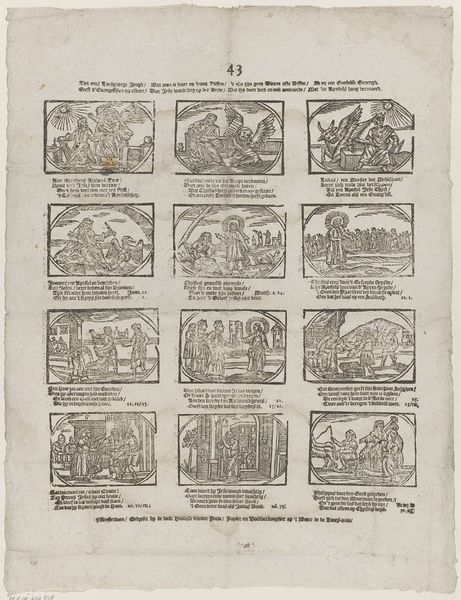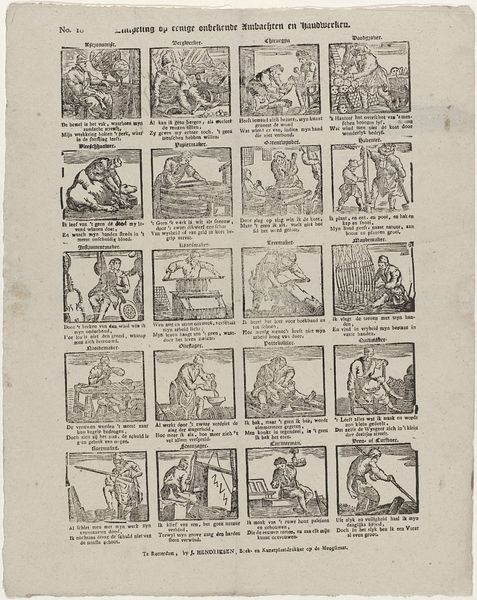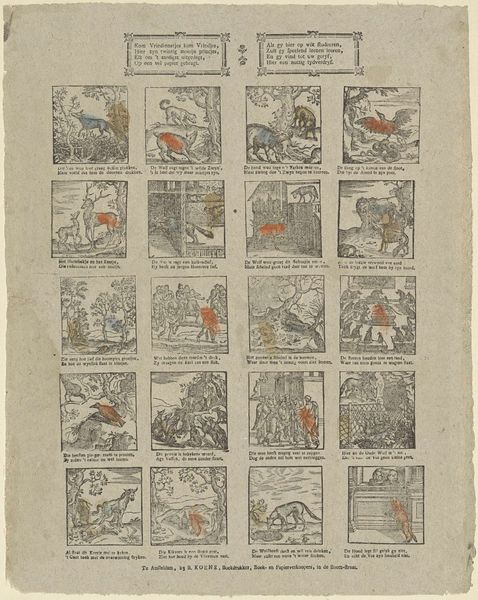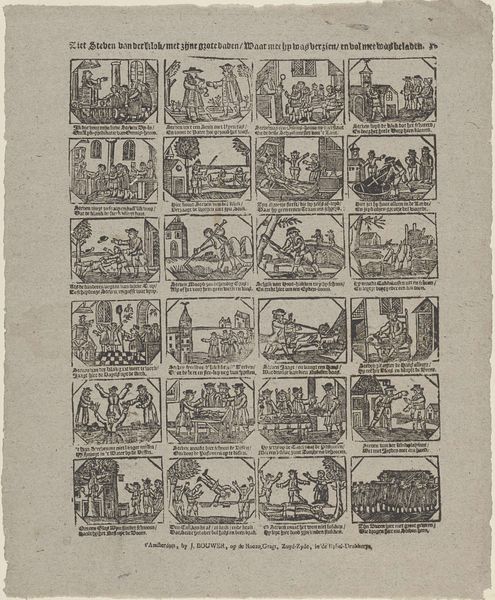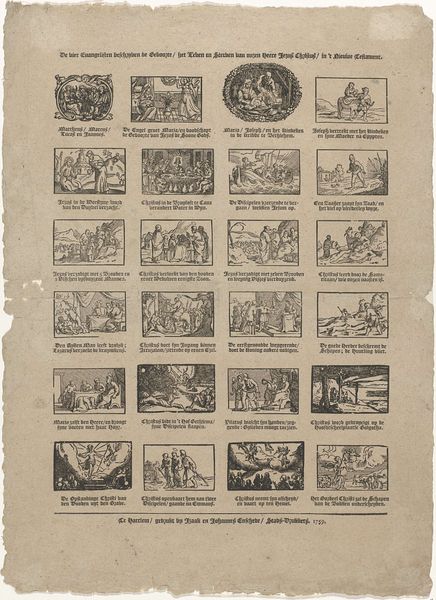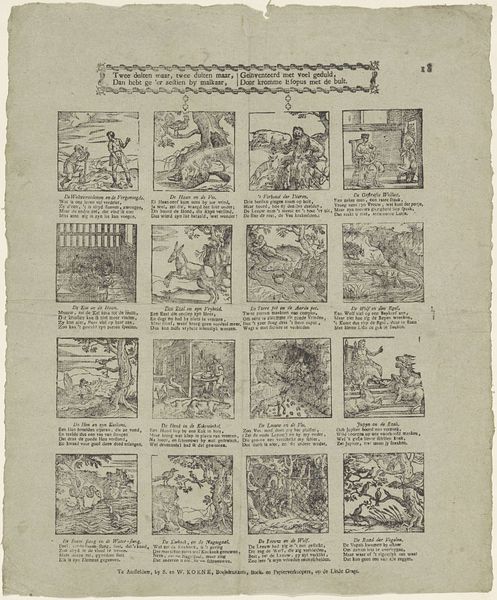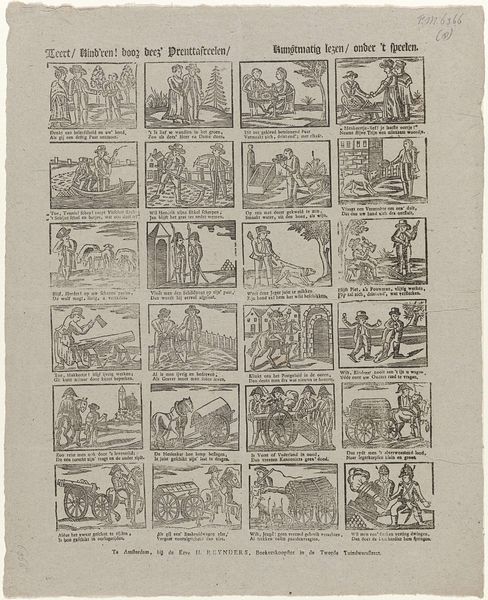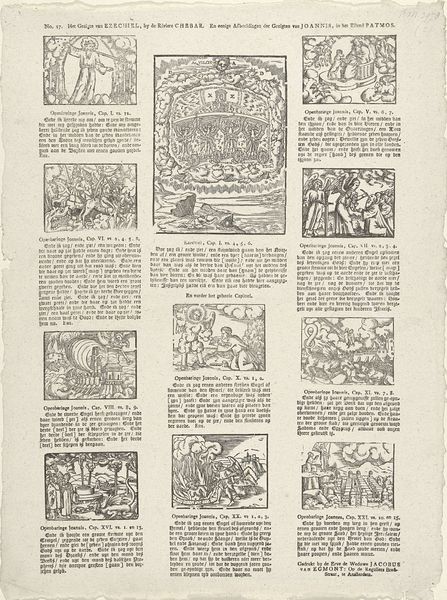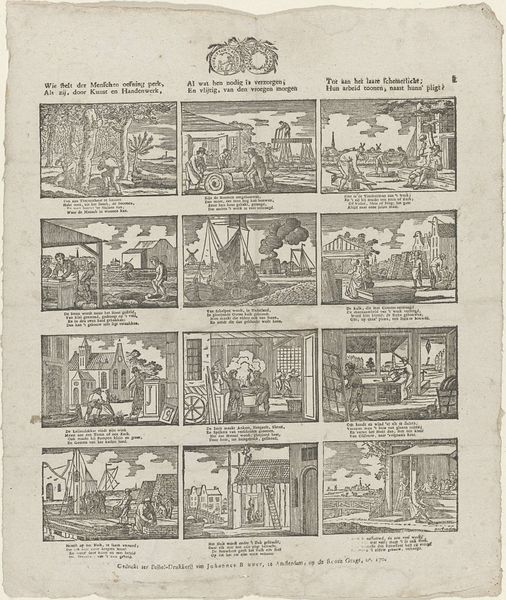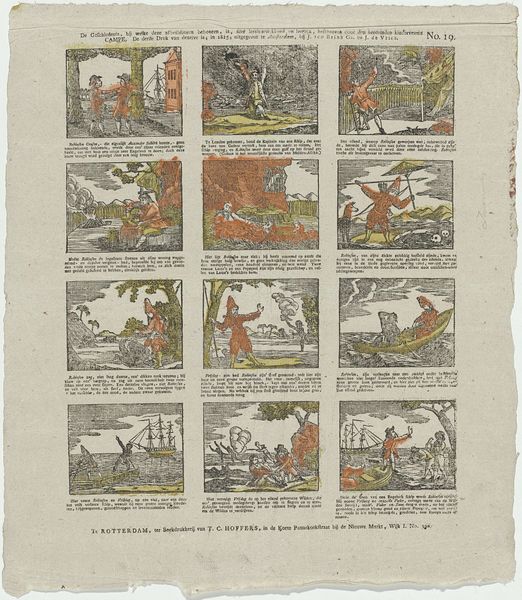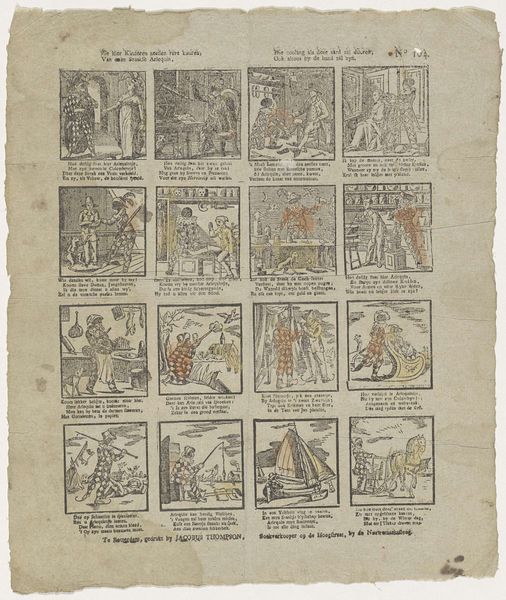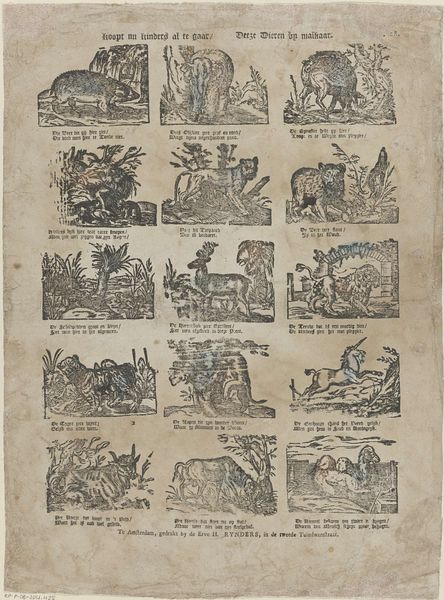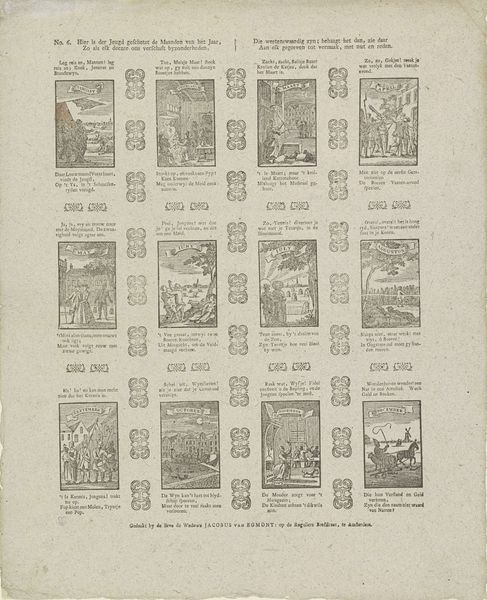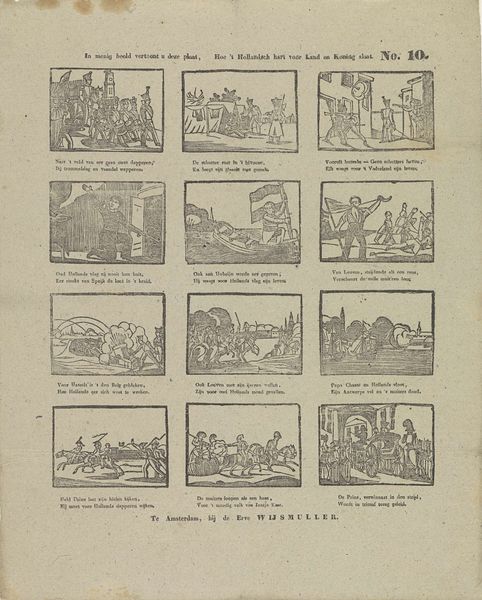
Wilt in dese prent studeren / Daer valt vry wat uyt te leeren 1765 - 1767
0:00
0:00
print, woodcut
#
narrative-art
# print
#
woodcut
#
comic
#
genre-painting
Dimensions: height 420 mm, width 310 mm
Copyright: Rijks Museum: Open Domain
Curator: Here we have "Wilt in dese prent studeren / Daer valt vry wat uyt te leeren," a fascinating woodcut made sometime between 1765 and 1767 by the weduwe Hendrik van der Putte. Editor: It’s visually quite striking; a grid of twelve small scenes each a world unto itself, all rendered in dense black lines. There's almost a comic strip quality to it. Curator: Absolutely! Each scene tells a little story. It's essentially a piece of narrative art, a collection of miniature genre paintings contained within a single print. If you look closely, you can decipher the satirical observations the artist makes. It speaks to the labor involved in both producing and interpreting imagery. Editor: Considering the print's purpose, do you know about its mode of manufacture? The density of detail for the medium suggests skilled craftsmanship. Curator: Exactly, these images circulated to shape how viewers perceived the world. Remember, art isn't just passive reflection; it actively helps construct meaning, especially for its audiences then and today. What perspectives might this artwork illuminate on 18th-century Dutch culture? Editor: Looking at the fashion and the social interactions depicted, I think it definitely offers a glimpse into the concerns and perhaps even the anxieties of the time. Consider the use of caricature – where might those exaggerated features originate and whose behaviors get magnified, by what criteria? Curator: That is a great observation. Moreover, let's not forget the labor involved in both producing and circulating such prints. Woodcuts demanded physical effort from both the artist and printer. And thinking about the intended audience shifts the discussion again… were these readily available? Affordable? Who was "invited" to participate? Editor: By posing those important contextual and manufacturing questions, we consider the print not just as art, but as a physical and social product intertwined with its means of production. It opens up a fascinating way to study Dutch culture. Curator: It truly does – engaging with this print reveals how historical art can address present questions regarding representation and materiality in intersectional frameworks, so crucial for navigating our own moment in time. Editor: Absolutely. And hopefully, this will entice viewers to consider this work beyond its aesthetic appeal and towards appreciating labor and manufacture!
Comments
No comments
Be the first to comment and join the conversation on the ultimate creative platform.
